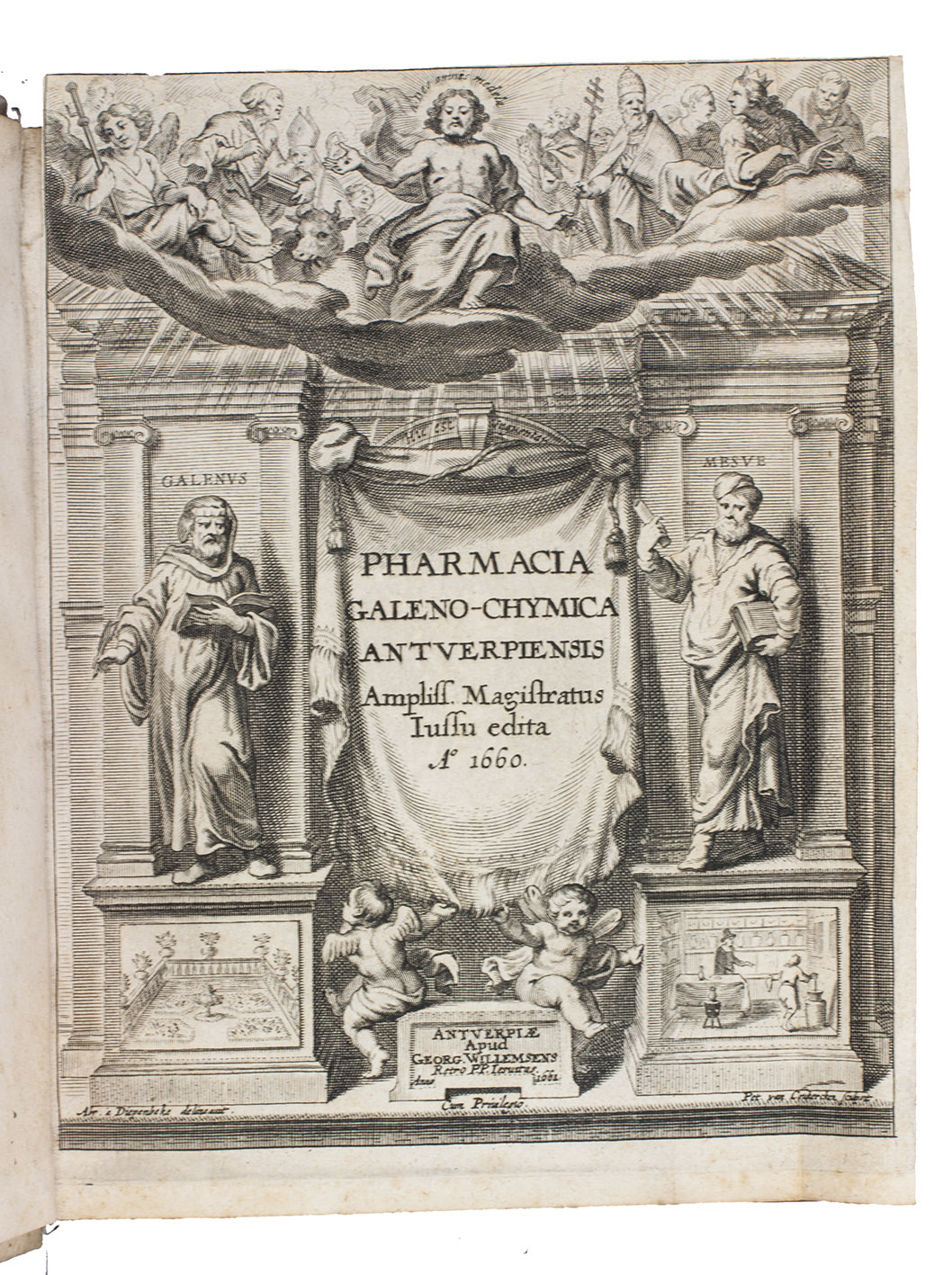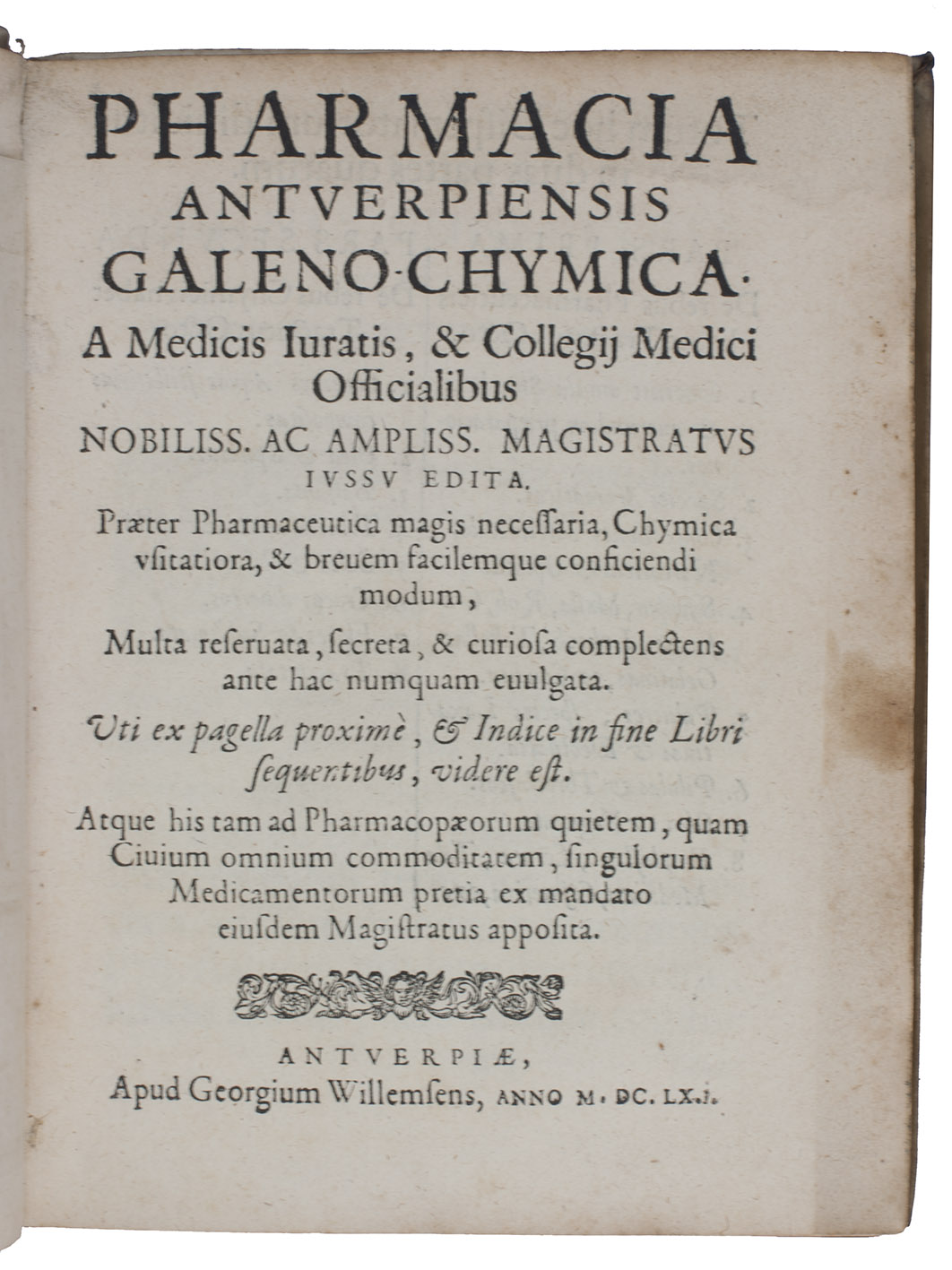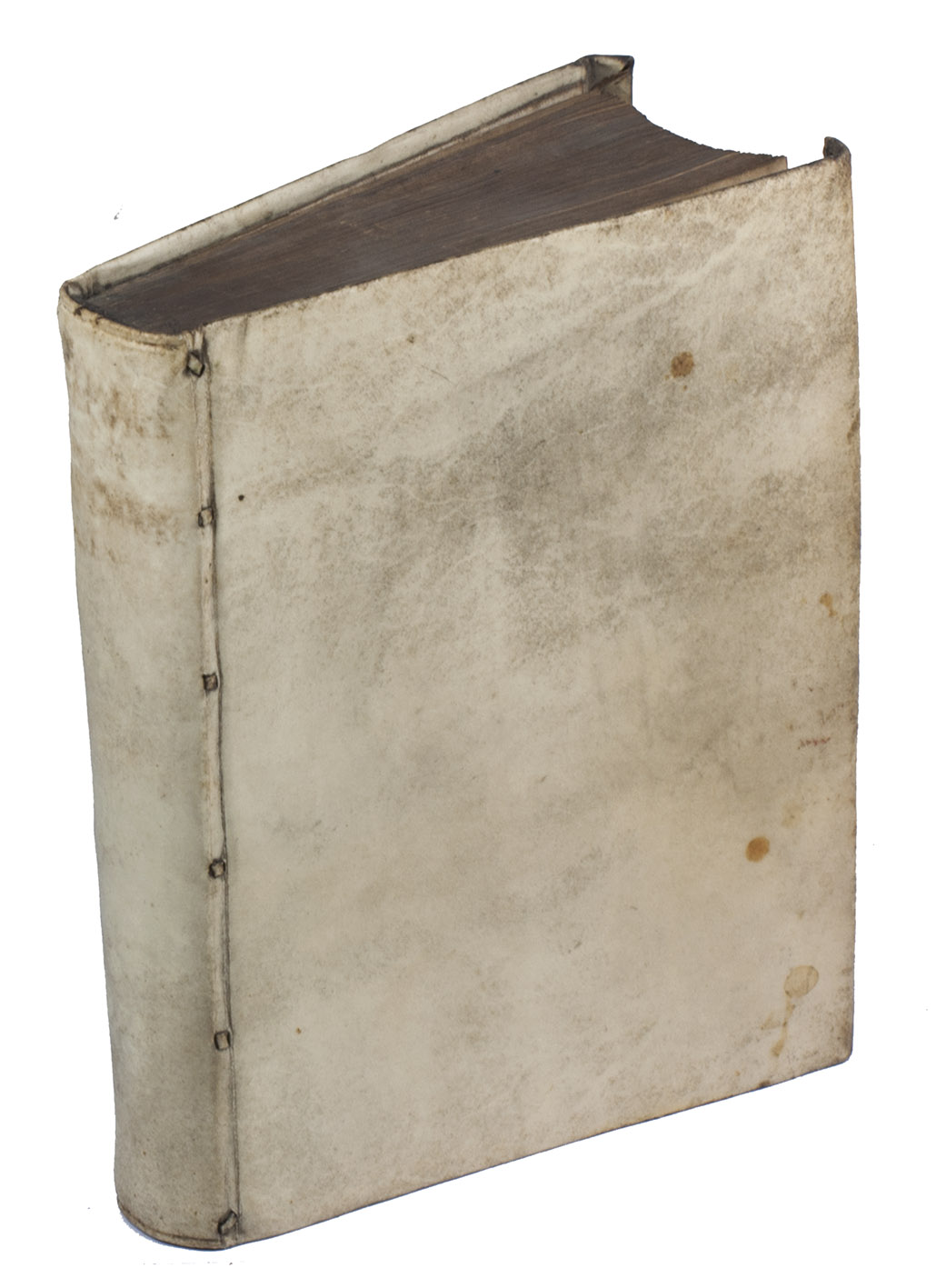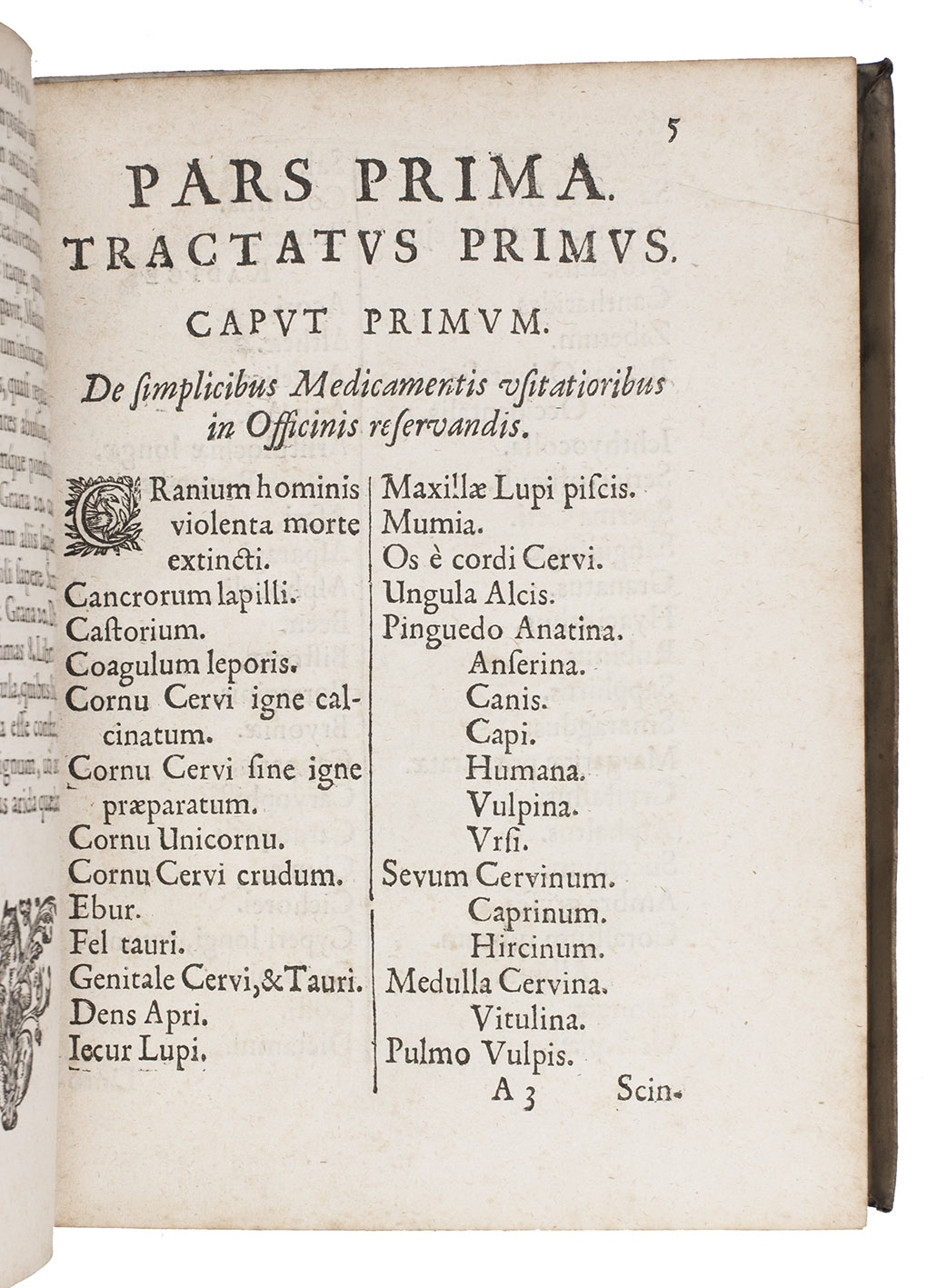[ANTWERP - PHARMACOPOEIA]. [BOUDEWIJNS, Michiel, and others].
Pharmacia Antverpiensis galeno-chymica.
Antwerp, Joris Willemsens I, 1660. 4to. With an integral engraved architectural title-page by Petrus van Caukercken after Abraham van Diepenbeeck, letterpress title-page with a woodcut decoration, a divisional title for part 2, woodcut tailpieces, woodcut decorated initials. Set in roman and italic, with incidental Greek, textura and pharmacological signs. 18th-century vellum, faded manuscript title on spine. [1], [1 blank], [46], “285” [= 281], [32], [1 blank] pp.
€ 2,750
Rare first and only edition, in Latin, of the first and only official pharmacopoeia for Antwerp, containing hundreds of medicinal recipes and throwing a great deal of light on 17th-century medical practice in the Low Countries. The work's separate part with the title "Selectiora chymica" shows the rising importance of chemistry in the production of medicines. Although Plantin published an important and influential 1568 Antwerp edition of Valerius Cordus's Dispensatorium, first published posthumously at Nürnberg in 1546, it was not produced by order of any official municipal body. In 1624 the magistrates of Antwerp set up a Collegium Medicum, which did declare that medicines were to be prepared following Cordus until further notice.
In 1659 the Antwerp Collegium Medicum decided to produce their own pharmacopoeia, primarily at the impetus of their secretary and future director, Michiel Boudewijns (1591-1681), best known as the father of modern medical ethics. Although his name does not appear on the title-page, the book does attribute the 18-page preface to him and he was probably the principal compiler of the book. The decision to compile it makes explicit reference to those published at Augsburg (1564), Rome (1583), Amsterdam (1636) and Brussels (1641), but Valerius may have remained the most important source. No apothecaries were officially consulted in the compilation of the pharmacopoeia, reflecting the growing status of physicians and declining status of apothecaries.
Although the letterpress title-page is dated 1660, the engraved title-page (when present) is apparently always dated 1661 and in some copies the 1660 has been corrected to 1661. The work has extensive preliminaries with dedications, notes to the reader, laudatory verses, etc., but some copies include an unsigned bifolium inserted after a2 containing an additional dedication, not present here. The present copy does have the rarer addendum leaf at the end and an addendum slip on Q3r supplying the omitted last line of that page (with the quire signature and catchword below it). The addendum leaf has three blind impressions of the type for this addendum slip in its head margin.
With minimal wear at the edges. With a brown spot in the outer margin of the first two gatherings; a very good copy. Anet (6 copies); Daems & Vandewiele, pp. 62-63 (5 copies); STCV 12879911 (5 copies incl. 1 defective); not in Krivatsy; Wellcome.
Related Subjects:



